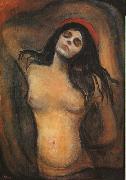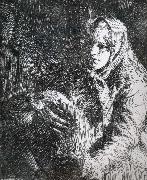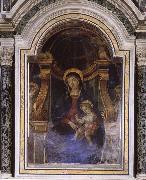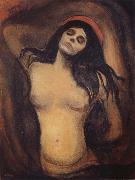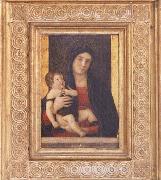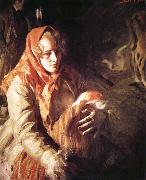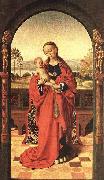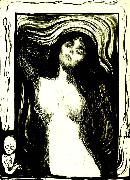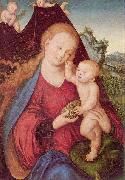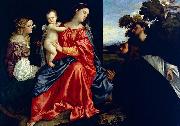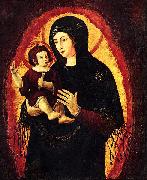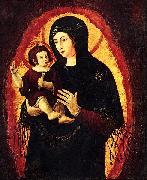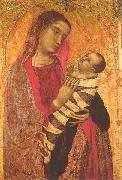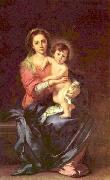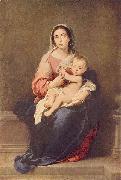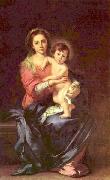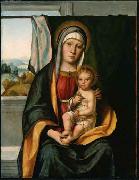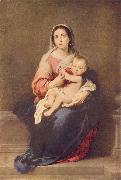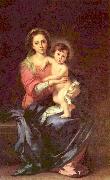Wholesale Oil Painting No Minimum |
|||||||||||
|
|
|||||||||||

|
|||||||||||
|
|
|
||||||||
Edvard MunchNorwegian 1863-1944 Edvard Munch Locations Edvard Munch (pronounced , December 12, 1863 ?C January 23, 1944) was a Norwegian Symbolist painter, printmaker, and an important forerunner of expressionistic art. His best-known composition, The Scream is one of the pieces in a series titled The Frieze of Life, in which Munch explored the themes of life, love, fear, death, and melancholy. Edvard Munch was born in a rustic farmhouse in the village of Adalsbruk in Loten, Norway to Christian Munch, the son of a prominent priest. Christian was a doctor and medical officer, who married Laura Cathrine Bjølstad, a woman half his age, in 1861. Edvard had an older sister, Johanne Sophie (born 1862), and three younger siblings: Peter Andreas (born 1865), Laura Cathrine (born 1867), and Inger Marie (born 1868). Both Sophie and Edvard appear to have gotten their art talent from their mother. Edvard Munch was related to painter Jacob Munch (1776?C1839) and historian Peter Andreas Munch (1810?C1863). The family moved to Kristiania (now Oslo) in 1864 when Christian Munch was appointed medical officer at Akershus Fortress. Edvard??s mother died of tuberculosis in 1868, as did Munch's favorite sister Johanne Sophie in 1877. After their mother's death, the Munch siblings were raised by their father and by their aunt Karen. Often ill for much of the winters and kept out of school, Edvard would draw to keep himself occupied. He also received tutoring from his school mates and his aunt. Christian Munch also instructed his son in history and literature, and entertained the children with vivid ghost stories and tales of Edgar Allan Poe. Christian??s positive behavior toward his children, however, was overshadowed by his morbid pietism. Munch wrote, ??My father was temperamentally nervous and obsessively religious??to the point of psychoneurosis. From him I inherited the seeds of madness. The angles of fear, sorrow, and death stood by my side since the day I was born.?? Christian reprimanded his children by telling them that their mother was looking down from heaven and grieving over their misbehavior. The oppressive religious milieu, plus Edvard??s poor health and the vivid ghost stories, helped inspire macabre visions and nightmares in Edvard, who felt death constantly advancing on him. One of Munch's younger sisters was diagnosed with mental illness at an early age. Of the five siblings only Andreas married, but he died a few months after the wedding. Munch would later write, "I inherited two of mankind's most frightful enemies??the heritage of consumption and insanity." Christian Munch??s military pay was very low, and his attempts at developing a private side practice failed, keeping his family in perrenial poverty. They moved frequently from one sordid flat to another. Munch??s early drawings and watercolors depicted these interiors, and the individual objects such as medicine bottles and drawing implements, plus some landscapes. By his teens, art dominated Munch??s interests. At thirteen, Munch has his first exposure to other artists at the newly formed Art Association, were he admired the work of the Norwegian landscape school, and where he returned to copy the paintings, and soon he began to paint in oils. |
||||||||
|
|
||||||||
Madonna
Madonna Painting ID:: 2813 |
National Gallery, Oslo National Gallery, Oslo |
|||||||
|
|
||||||||
Anders ZornSwedish 1860-1920 Swedish painter, etcher and sculptor. He was brought up by his grandparents at Mora. As he displayed a precocious talent for drawing he was admitted to the preparatory class of the Kungliga Akademi for de Fria Konsterna, Stockholm, at the age of 15. Dissatisfied with the outdated teaching and discipline of the Academy and encouraged by his early success as a painter of watercolour portraits and genre scenes (e.g. Old Woman from Mora, 1879; Mora, Zornmus.) Zorn left the Academy in 1881 to try to establish an international career. He later resided mainly in London but also travelled extensively in Italy, France, Spain, Algeria and the Balkans and visited Constantinople. However, he continued to spend most of his summers in Sweden. |
||||||||
|
|
||||||||
|
|
Madonna
Madonna Painting ID:: 31591 |
mk73
1900
pencil drawing
mk73 1900 pencil drawing |
||||||
|
|
||||||||
PinturicchioItalian Early Renaissance Painter, 1454-1513 was an Italian painter of the Renaissance. He was born in Perugia, the son of Benedetto or Betto di Blagio. He may have trained under lesser known Perugian painters such as Bonfigli and Fiorenzo di Lorenzo. According to Vasari, Pinturrichio was a paid assistant of Perugino. The works of the Perugian Renaissance school are very similar; and paintings by Perugino, Pinturicchio, Lo Spagna and a young Raphael may often be mistaken one for the other. |
||||||||
|
|
||||||||
|
|
Madonna
Madonna Painting ID:: 33231 |
mk83
1489-1492
mk83 1489-1492 |
||||||
|
|
||||||||
Edvard MunchNorwegian 1863-1944 Edvard Munch Locations Edvard Munch (pronounced , December 12, 1863 ?C January 23, 1944) was a Norwegian Symbolist painter, printmaker, and an important forerunner of expressionistic art. His best-known composition, The Scream is one of the pieces in a series titled The Frieze of Life, in which Munch explored the themes of life, love, fear, death, and melancholy. Edvard Munch was born in a rustic farmhouse in the village of Adalsbruk in Loten, Norway to Christian Munch, the son of a prominent priest. Christian was a doctor and medical officer, who married Laura Cathrine Bjølstad, a woman half his age, in 1861. Edvard had an older sister, Johanne Sophie (born 1862), and three younger siblings: Peter Andreas (born 1865), Laura Cathrine (born 1867), and Inger Marie (born 1868). Both Sophie and Edvard appear to have gotten their art talent from their mother. Edvard Munch was related to painter Jacob Munch (1776?C1839) and historian Peter Andreas Munch (1810?C1863). The family moved to Kristiania (now Oslo) in 1864 when Christian Munch was appointed medical officer at Akershus Fortress. Edvard??s mother died of tuberculosis in 1868, as did Munch's favorite sister Johanne Sophie in 1877. After their mother's death, the Munch siblings were raised by their father and by their aunt Karen. Often ill for much of the winters and kept out of school, Edvard would draw to keep himself occupied. He also received tutoring from his school mates and his aunt. Christian Munch also instructed his son in history and literature, and entertained the children with vivid ghost stories and tales of Edgar Allan Poe. Christian??s positive behavior toward his children, however, was overshadowed by his morbid pietism. Munch wrote, ??My father was temperamentally nervous and obsessively religious??to the point of psychoneurosis. From him I inherited the seeds of madness. The angles of fear, sorrow, and death stood by my side since the day I was born.?? Christian reprimanded his children by telling them that their mother was looking down from heaven and grieving over their misbehavior. The oppressive religious milieu, plus Edvard??s poor health and the vivid ghost stories, helped inspire macabre visions and nightmares in Edvard, who felt death constantly advancing on him. One of Munch's younger sisters was diagnosed with mental illness at an early age. Of the five siblings only Andreas married, but he died a few months after the wedding. Munch would later write, "I inherited two of mankind's most frightful enemies??the heritage of consumption and insanity." Christian Munch??s military pay was very low, and his attempts at developing a private side practice failed, keeping his family in perrenial poverty. They moved frequently from one sordid flat to another. Munch??s early drawings and watercolors depicted these interiors, and the individual objects such as medicine bottles and drawing implements, plus some landscapes. By his teens, art dominated Munch??s interests. At thirteen, Munch has his first exposure to other artists at the newly formed Art Association, were he admired the work of the Norwegian landscape school, and where he returned to copy the paintings, and soon he began to paint in oils. |
||||||||
|
|
||||||||
|
|
Madonna
Madonna Painting ID:: 40837 |
mk156
1894
Oil on canvas
90x68.5cm
mk156 1894 Oil on canvas 90x68.5cm |
||||||
|
|
||||||||
Gentile BelliniItalian c1429-1507 Gentile Bellini Gallery (b Venice, ?1429; d Venice, 23 Feb 1507). Painter and draughtsman, son of (1) Jacopo Bellini. An official painter of the Venetian Republic, he was a dominant figure in Venetian art for several decades in the latter half of the 15th century, known particularly for portraits and large narrative paintings in which the city and its inhabitants are depicted in great detail. |
||||||||
|
|
||||||||
|
|
Madonna
Madonna Painting ID:: 41187 |
mk157
c.1475
Wood
75x50cm
mk157 c.1475 Wood 75x50cm |
||||||
|
|
||||||||
Anders ZornSwedish 1860-1920 Swedish painter, etcher and sculptor. He was brought up by his grandparents at Mora. As he displayed a precocious talent for drawing he was admitted to the preparatory class of the Kungliga Akademi for de Fria Konsterna, Stockholm, at the age of 15. Dissatisfied with the outdated teaching and discipline of the Academy and encouraged by his early success as a painter of watercolour portraits and genre scenes (e.g. Old Woman from Mora, 1879; Mora, Zornmus.) Zorn left the Academy in 1881 to try to establish an international career. He later resided mainly in London but also travelled extensively in Italy, France, Spain, Algeria and the Balkans and visited Constantinople. However, he continued to spend most of his summers in Sweden. |
||||||||
|
|
||||||||
|
|
madonna
madonna Painting ID:: 58564 |
mk262 olja 1899 konstmuseet, budapest mk262 olja 1899 konstmuseet, budapest |
||||||
|
|
||||||||
Edvard MunchNorwegian 1863-1944 Edvard Munch Locations Edvard Munch (pronounced , December 12, 1863 ?C January 23, 1944) was a Norwegian Symbolist painter, printmaker, and an important forerunner of expressionistic art. His best-known composition, The Scream is one of the pieces in a series titled The Frieze of Life, in which Munch explored the themes of life, love, fear, death, and melancholy. Edvard Munch was born in a rustic farmhouse in the village of Adalsbruk in Loten, Norway to Christian Munch, the son of a prominent priest. Christian was a doctor and medical officer, who married Laura Cathrine Bjølstad, a woman half his age, in 1861. Edvard had an older sister, Johanne Sophie (born 1862), and three younger siblings: Peter Andreas (born 1865), Laura Cathrine (born 1867), and Inger Marie (born 1868). Both Sophie and Edvard appear to have gotten their art talent from their mother. Edvard Munch was related to painter Jacob Munch (1776?C1839) and historian Peter Andreas Munch (1810?C1863). The family moved to Kristiania (now Oslo) in 1864 when Christian Munch was appointed medical officer at Akershus Fortress. Edvard??s mother died of tuberculosis in 1868, as did Munch's favorite sister Johanne Sophie in 1877. After their mother's death, the Munch siblings were raised by their father and by their aunt Karen. Often ill for much of the winters and kept out of school, Edvard would draw to keep himself occupied. He also received tutoring from his school mates and his aunt. Christian Munch also instructed his son in history and literature, and entertained the children with vivid ghost stories and tales of Edgar Allan Poe. Christian??s positive behavior toward his children, however, was overshadowed by his morbid pietism. Munch wrote, ??My father was temperamentally nervous and obsessively religious??to the point of psychoneurosis. From him I inherited the seeds of madness. The angles of fear, sorrow, and death stood by my side since the day I was born.?? Christian reprimanded his children by telling them that their mother was looking down from heaven and grieving over their misbehavior. The oppressive religious milieu, plus Edvard??s poor health and the vivid ghost stories, helped inspire macabre visions and nightmares in Edvard, who felt death constantly advancing on him. One of Munch's younger sisters was diagnosed with mental illness at an early age. Of the five siblings only Andreas married, but he died a few months after the wedding. Munch would later write, "I inherited two of mankind's most frightful enemies??the heritage of consumption and insanity." Christian Munch??s military pay was very low, and his attempts at developing a private side practice failed, keeping his family in perrenial poverty. They moved frequently from one sordid flat to another. Munch??s early drawings and watercolors depicted these interiors, and the individual objects such as medicine bottles and drawing implements, plus some landscapes. By his teens, art dominated Munch??s interests. At thirteen, Munch has his first exposure to other artists at the newly formed Art Association, were he admired the work of the Norwegian landscape school, and where he returned to copy the paintings, and soon he began to paint in oils. |
||||||||
|
|
||||||||
|
|
Madonna
Madonna Painting ID:: 59982 |
Madonna (1894-95) Madonna (1894-95) |
||||||
|
|
||||||||
Petrus ChristusFlemish 1415-1473 Petrus Christus Locations South Netherlandish painter. His known artistic career began in Bruges on 6 July 1444 when, as the Poorterboek (citizens register) for that day reveals, he purchased his citizenship ... in order to be a painter. Town records show that he and his wife became members of the Confraternity of the Dry Tree c. 1462; that in 1463 he and another painter, Pieter Nachtegale, were paid for the construction of a Tree of Jesse (destr.) and for the cost of assistants employed on the day of the religious procession in which it was used; and that on 19 March 1472 he served as a representative of the painters guild in a dispute with another painter, Jehan de Hervy the elder ( fl 1472-1507). These and a few other scattered references comprise the existing documentation for Christusa life and work. |
||||||||
|
|
||||||||
|
|
Madonna
Madonna Painting ID:: 63561 |
1445 Wood, 55,5 x 31,5 cm Museum of Fine Arts, Budapest We know very little about the life of Petrus Christus, though it is certain that in 1444 he obtained the citizenship of Bruges, then the richest town in Flanders and its main artistic centre. He may have been the pupil of Jan van Eyck, and in his surviving panel paintings we can see that his solutions to problems of composition and his figure types are similar to those of his predecessor. Indeed Christus's delicately wrought and brilliantly coloured works served to popularise the technique and manner of Van Eyck. Some fifteen to twenty works by Christus are known, one of which is The Virgin and Child, probably the surviving part of a triptych for home devotion. Framed by a semi-circular arch resting on slender columns and with a pleasant landscape in the background, the Virgin looks tenderly down at the naked Infant supported on her arm. Every detail has been painted with meticulous care - the minute wrinkles on the Infant's face, the foliage of the trees in the distance and the statuette of Adam and Eve on the columns at the sides, which, in alluding to the Fall, emphasize the coming Redemption through Christ. Other versions and copies have survived, indicating the popularity of this picture over the years, but unfortunately none of them give any clue as to when it was painted or who commissioned it.Artist:CHRISTUS, Petrus Title: Madonna Painted in 1451-1500 , Flemish - - painting : religious 1445 Wood, 55,5 x 31,5 cm Museum of Fine Arts, Budapest We know very little about the life of Petrus Christus, though it is certain that in 1444 he obtained the citizenship of Bruges, then the richest town in Flanders and its main artistic centre. He may have been the pupil of Jan van Eyck, and in his surviving panel paintings we can see that his solutions to problems of composition and his figure types are similar to those of his predecessor. Indeed Christus's delicately wrought and brilliantly coloured works served to popularise the technique and manner of Van Eyck. Some fifteen to twenty works by Christus are known, one of which is The Virgin and Child, probably the surviving part of a triptych for home devotion. Framed by a semi-circular arch resting on slender columns and with a pleasant landscape in the background, the Virgin looks tenderly down at the naked Infant supported on her arm. Every detail has been painted with meticulous care - the minute wrinkles on the Infant's face, the foliage of the trees in the distance and the statuette of Adam and Eve on the columns at the sides, which, in alluding to the Fall, emphasize the coming Redemption through Christ. Other versions and copies have survived, indicating the popularity of this picture over the years, but unfortunately none of them give any clue as to when it was painted or who commissioned it.Artist:CHRISTUS, Petrus Title: Madonna Painted in 1451-1500 , Flemish - - painting : religious |
||||||
|
|
||||||||
Edvard MunchNorwegian 1863-1944 Edvard Munch Locations Edvard Munch (pronounced , December 12, 1863 ?C January 23, 1944) was a Norwegian Symbolist painter, printmaker, and an important forerunner of expressionistic art. His best-known composition, The Scream is one of the pieces in a series titled The Frieze of Life, in which Munch explored the themes of life, love, fear, death, and melancholy. Edvard Munch was born in a rustic farmhouse in the village of Adalsbruk in Loten, Norway to Christian Munch, the son of a prominent priest. Christian was a doctor and medical officer, who married Laura Cathrine Bjølstad, a woman half his age, in 1861. Edvard had an older sister, Johanne Sophie (born 1862), and three younger siblings: Peter Andreas (born 1865), Laura Cathrine (born 1867), and Inger Marie (born 1868). Both Sophie and Edvard appear to have gotten their art talent from their mother. Edvard Munch was related to painter Jacob Munch (1776?C1839) and historian Peter Andreas Munch (1810?C1863). The family moved to Kristiania (now Oslo) in 1864 when Christian Munch was appointed medical officer at Akershus Fortress. Edvard??s mother died of tuberculosis in 1868, as did Munch's favorite sister Johanne Sophie in 1877. After their mother's death, the Munch siblings were raised by their father and by their aunt Karen. Often ill for much of the winters and kept out of school, Edvard would draw to keep himself occupied. He also received tutoring from his school mates and his aunt. Christian Munch also instructed his son in history and literature, and entertained the children with vivid ghost stories and tales of Edgar Allan Poe. Christian??s positive behavior toward his children, however, was overshadowed by his morbid pietism. Munch wrote, ??My father was temperamentally nervous and obsessively religious??to the point of psychoneurosis. From him I inherited the seeds of madness. The angles of fear, sorrow, and death stood by my side since the day I was born.?? Christian reprimanded his children by telling them that their mother was looking down from heaven and grieving over their misbehavior. The oppressive religious milieu, plus Edvard??s poor health and the vivid ghost stories, helped inspire macabre visions and nightmares in Edvard, who felt death constantly advancing on him. One of Munch's younger sisters was diagnosed with mental illness at an early age. Of the five siblings only Andreas married, but he died a few months after the wedding. Munch would later write, "I inherited two of mankind's most frightful enemies??the heritage of consumption and insanity." Christian Munch??s military pay was very low, and his attempts at developing a private side practice failed, keeping his family in perrenial poverty. They moved frequently from one sordid flat to another. Munch??s early drawings and watercolors depicted these interiors, and the individual objects such as medicine bottles and drawing implements, plus some landscapes. By his teens, art dominated Munch??s interests. At thirteen, Munch has his first exposure to other artists at the newly formed Art Association, were he admired the work of the Norwegian landscape school, and where he returned to copy the paintings, and soon he began to paint in oils. |
||||||||
|
|
||||||||
|
|
madonna
madonna Painting ID:: 69208 |
1902, 60.5x44.2cm
se 1902, 60.5x44.2cm se |
||||||
|
|
||||||||
Lucas CranachKronach 1472-Weimar 1553 German painter and engraver. The son of a painter, he settled in Wittenberg c.1504 and was court painter successively under three electors of Saxony. There he maintained a flourishing workshop and was twice burgomaster. Cranach was a close friend of Martin Luther, whose doctrine he upheld in numerous paintings and woodcuts, and he has been called the painter of the Reformation. He was a rapid and prolific painter, and the work turned out by his studio is uneven in quality. Naïve and fanciful, often awkward in draftsmanship, it has, nonetheless, freshness and originality and a warm, rich palette. His portraits are particularly successful. Among his best-known works are Repose in Egypt (Gemäldgalerie, Staatliche Mus., Berlin-Dahlem); Judgment of Paris (Staatliche Kunsthalle, Karlsruhe); Adam and Eve (Courtauld Inst., London); and Crucifixion (Weimar). The latter contains figures of Luther and Cranach. His many famous protraits include those of Elector John Frederick and Self-Portrait (Uffizi). Cranach was also an accomplished miniaturist. He produced a few copperplates and designs for woodcuts. His son and pupil Lucas Cranach, the Younger, |
||||||||
|
|
||||||||
|
|
Madonna
Madonna Painting ID:: 70463 |
Medium Oil on wood
Dimensions Expression error: Missing operand for *60 ?? 42 cm
Medium Oil on wood Dimensions Expression error: Missing operand for *60 ?? 42 cm |
||||||
|
|
||||||||
Albrecht Durerb.May 21, 1471, Imperial Free City of Nernberg [Germany] d.April 6, 1528, Nernberg Albrecht Durer (May 21, 1471 ?C April 6, 1528) was a German painter, printmaker and theorist from Nuremberg. His still-famous works include the Apocalypse woodcuts, Knight, Death, and the Devil (1513), Saint Jerome in his Study (1514) and Melencolia I (1514), which has been the subject of extensive analysis and interpretation. His watercolours mark him as one of the first European landscape artists, while his ambitious woodcuts revolutionized the potential of that medium. D??rer introduction of classical motifs into Northern art, through his knowledge of Italian artists and German humanists, have secured his reputation as one of the most important figures of the Northern Renaissance. This is reinforced by his theoretical treatise which involve principles of mathematics, perspective and ideal proportions. His prints established his reputation across Europe when he was still in his twenties, and he has been conventionally regarded as the greatest artist of the Renaissance in Northern Europe ever since. |
||||||||
|
|
||||||||
|
|
Madonna
Madonna Painting ID:: 71625 |
Date 1505
Date 1505 |
||||||
|
|
||||||||
Albrecht AltdorferGerman 1480-1538 Albrecht Altdorfer Galleries He most often painted religious scenes, but is mainly famous as the first frequent painter of pure landscape, and also compositions dominated by their landscape. Taking and developing the landscape style of Lucas Cranach the Elder, he shows the hilly landscape of the Danube valley with thick forests of drooping and crumbling firs and larches hung with moss, and often dramatic colouring from a rising or setting sun. His Landscape with footbridge (National Gallery, London) of 1518-20 is claimed to be the first pure landscape in oil. He also made many fine finished drawings, mostly landscapes, in pen and watercolour. His best religious scenes are intense, sometimes verging on the expressionistic, and often depict moments of intimacy between Christ and his mother, or others. His most famous religious artwork is the The Legend of St. Sebastian and the Passion of Christ that decorated the altar in the St. Florian monastery in Linz, Austria. He often distorts perspective to subtle effect. His donor figures are often painted completely out of scale with the main scene, as in paintings of the previous centuries. He also painted some portraits; overall his painted oeuvre was not large. |
||||||||
|
|
||||||||
|
|
Madonna
Madonna Painting ID:: 76916 |
c. 1519-1522
Oil on wood
75,8 ?? 65 cm
cjr c. 1519-1522 Oil on wood 75,8 ?? 65 cm cjr |
||||||
|
|
||||||||
Ambrogio LorenzettiItalian Byzantine Style Painter, ca.1290-1348 Ambrogio Lorenzetti (or Ambruogio Laurati; c. 1290 ?C June 9, 1348) was an Italian painter of the Sienese school. He was active between approximately from 1317 to 1348. His elder brother was the painter Pietro Lorenzetti. His work shows the influence of Simone Martini, although more naturalistic. The earliest dated work of the Sienese painter is a Madonna and Child (1319, Museo Diocesano, San Casciano). His presence was documented in Florentine up until 1321. He would return there after spending a number of years in Siena. The frescoes on the walls of the Hall of the Nine (Sala dei Nove) or Hall of the Peace (Sala della Pace) in the Palazzo Pubblico of Siena are one of the masterworks of early renaissance secular painting. The "nine" was the oligarchal assembly of guild and monetary interests that governed the republic. Three walls are painted with frescoes consisting of a large assembly of allegorical figures of virtues in the Allegory of Good Government . In the other two facing panels, Ambrogio weaves panoramic visions of Effects of Good Government on Town and Country, and Allegory of Bad Government and its Effects on Town and Country (also called "Ill-governed Town and Country"). The better preserved "well-governed town and country" is an unrivaled pictorial encyclopedia of incidents in a peaceful medieval "borgo" and countryside. The first evidence of the existence of the hourglass can be found in one of his paintings. Like his brother, he is believed to have died of bubonic plague 1348. Giorgio Vasari includes a biography of Lorenzetti in his Lives. |
||||||||
|
|
||||||||
|
|
Madonna
Madonna Painting ID:: 79483 |
1319(1319)
Oil on panel
85 x 57 cm (33.5 x 22.4 in)
cjr 1319(1319) Oil on panel 85 x 57 cm (33.5 x 22.4 in) cjr |
||||||
|
|
||||||||
Albrecht AltdorferGerman 1480-1538 Albrecht Altdorfer Galleries He most often painted religious scenes, but is mainly famous as the first frequent painter of pure landscape, and also compositions dominated by their landscape. Taking and developing the landscape style of Lucas Cranach the Elder, he shows the hilly landscape of the Danube valley with thick forests of drooping and crumbling firs and larches hung with moss, and often dramatic colouring from a rising or setting sun. His Landscape with footbridge (National Gallery, London) of 1518-20 is claimed to be the first pure landscape in oil. He also made many fine finished drawings, mostly landscapes, in pen and watercolour. His best religious scenes are intense, sometimes verging on the expressionistic, and often depict moments of intimacy between Christ and his mother, or others. His most famous religious artwork is the The Legend of St. Sebastian and the Passion of Christ that decorated the altar in the St. Florian monastery in Linz, Austria. He often distorts perspective to subtle effect. His donor figures are often painted completely out of scale with the main scene, as in paintings of the previous centuries. He also painted some portraits; overall his painted oeuvre was not large. |
||||||||
|
|
||||||||
|
|
Madonna
Madonna Painting ID:: 80292 |
Deutsch: um 1519-1522
English: c. 1519-1522
Medium Oil on wood
Dimensions 75,8 x 65 cm
cyf Deutsch: um 1519-1522 English: c. 1519-1522 Medium Oil on wood Dimensions 75,8 x 65 cm cyf |
||||||
|
|
||||||||
Ambrogio LorenzettiItalian Byzantine Style Painter, ca.1290-1348 Ambrogio Lorenzetti (or Ambruogio Laurati; c. 1290 ?C June 9, 1348) was an Italian painter of the Sienese school. He was active between approximately from 1317 to 1348. His elder brother was the painter Pietro Lorenzetti. His work shows the influence of Simone Martini, although more naturalistic. The earliest dated work of the Sienese painter is a Madonna and Child (1319, Museo Diocesano, San Casciano). His presence was documented in Florentine up until 1321. He would return there after spending a number of years in Siena. The frescoes on the walls of the Hall of the Nine (Sala dei Nove) or Hall of the Peace (Sala della Pace) in the Palazzo Pubblico of Siena are one of the masterworks of early renaissance secular painting. The "nine" was the oligarchal assembly of guild and monetary interests that governed the republic. Three walls are painted with frescoes consisting of a large assembly of allegorical figures of virtues in the Allegory of Good Government . In the other two facing panels, Ambrogio weaves panoramic visions of Effects of Good Government on Town and Country, and Allegory of Bad Government and its Effects on Town and Country (also called "Ill-governed Town and Country"). The better preserved "well-governed town and country" is an unrivaled pictorial encyclopedia of incidents in a peaceful medieval "borgo" and countryside. The first evidence of the existence of the hourglass can be found in one of his paintings. Like his brother, he is believed to have died of bubonic plague 1348. Giorgio Vasari includes a biography of Lorenzetti in his Lives. |
||||||||
|
|
||||||||
|
|
Madonna
Madonna Painting ID:: 82390 |
1319(1319)
Medium Oil on panel
Dimensions 85 x 57 cm (33.5 x 22.4 in)
cyf 1319(1319) Medium Oil on panel Dimensions 85 x 57 cm (33.5 x 22.4 in) cyf |
||||||
|
|
||||||||
Bartolome Esteban MurilloSpanish 1618-1682 Bartolome Esteban Murillo Galleries Murillo began his art studies under Juan del Castillo in Seville. Murillo became familiar with Flemish painting; the great commercial importance of Seville at the time ensured that he was also subject to influences from other regions. His first works were influenced by Zurbaran, Jusepe de Ribera and Alonso Cano, and he shared their strongly realist approach. As his painting developed, his more important works evolved towards the polished style that suited the bourgeois and aristocratic tastes of the time, demonstrated especially in his Roman Catholic religious works. In 1642, at the age of 26 he moved to Madrid, where he most likely became familiar with the work of Velazquez, and would have seen the work of Venetian and Flemish masters in the royal collections; the rich colors and softly modeled forms of his subsequent work suggest these influences. He returned to Seville in 1645. In that year, he painted thirteen canvases for the monastery of St. Francisco el Grande in Seville which gave his reputation a well-deserved boost. Following the completion of a pair of pictures for the Seville Cathedral, he began to specialise in the themes that brought him his greatest successes, the Virgin and Child, and the Immaculate Conception. After another period in Madrid, from 1658 to 1660, he returned to Seville. Here he was one of the founders of the Academia de Bellas Artes (Academy of Art), sharing its direction, in 1660, with the architect, Francisco Herrera the Younger. This was his period of greatest activity, and he received numerous important commissions, among them the altarpieces for the Augustinian monastery, the paintings for Santa Mar??a la Blanca (completed in 1665), and others. |
||||||||
|
|
||||||||
|
|
Madonna
Madonna Painting ID:: 84396 |
Date ca. between 1655(1655) and 1660(1660)
Medium Oil on canvas
Dimensions 157 x 107 cm (61.8 x 42.1 in)
cjr Date ca. between 1655(1655) and 1660(1660) Medium Oil on canvas Dimensions 157 x 107 cm (61.8 x 42.1 in) cjr |
||||||
|
|
||||||||
Perez, Antonio GisbertSpanish Painter, 1835-1902 |
||||||||
|
|
||||||||
|
|
Madonna
Madonna Painting ID:: 87149 |
. 1670(1670)
Medium Oil on canvas
Dimensions 166 x 115 cm
cyf . 1670(1670) Medium Oil on canvas Dimensions 166 x 115 cm cyf |
||||||
|
|
||||||||
Bartolome Esteban MurilloSpanish 1618-1682 Bartolome Esteban Murillo Galleries Murillo began his art studies under Juan del Castillo in Seville. Murillo became familiar with Flemish painting; the great commercial importance of Seville at the time ensured that he was also subject to influences from other regions. His first works were influenced by Zurbaran, Jusepe de Ribera and Alonso Cano, and he shared their strongly realist approach. As his painting developed, his more important works evolved towards the polished style that suited the bourgeois and aristocratic tastes of the time, demonstrated especially in his Roman Catholic religious works. In 1642, at the age of 26 he moved to Madrid, where he most likely became familiar with the work of Velazquez, and would have seen the work of Venetian and Flemish masters in the royal collections; the rich colors and softly modeled forms of his subsequent work suggest these influences. He returned to Seville in 1645. In that year, he painted thirteen canvases for the monastery of St. Francisco el Grande in Seville which gave his reputation a well-deserved boost. Following the completion of a pair of pictures for the Seville Cathedral, he began to specialise in the themes that brought him his greatest successes, the Virgin and Child, and the Immaculate Conception. After another period in Madrid, from 1658 to 1660, he returned to Seville. Here he was one of the founders of the Academia de Bellas Artes (Academy of Art), sharing its direction, in 1660, with the architect, Francisco Herrera the Younger. This was his period of greatest activity, and he received numerous important commissions, among them the altarpieces for the Augustinian monastery, the paintings for Santa Mar??a la Blanca (completed in 1665), and others. |
||||||||
|
|
||||||||
|
|
Madonna
Madonna Painting ID:: 88187 |
Oil on canvas
Dimensions 157 x 107 cm (61.8 x 42.1 in)
cyf Oil on canvas Dimensions 157 x 107 cm (61.8 x 42.1 in) cyf |
||||||
|
|
||||||||
Boccaccio Boccaccino(c. 1467 - c. 1525) was a painter of the early Italian Renaissance, belonging to the Emilian school. He is profiled in Vasari's Le Vite delle pie eccellenti pittori, scultori, ed architettori (or, in English, Lives of the Most Excellent Painters, Sculptors, and Architects). He was born in Ferrara and studied there, probably under Domenico Panetti. Few facts of his life are known. His principal artistic activity was in Venice, Ferrara, and especially in Cremona, where he founded a school in which Garofalo was a pupil. His most celebrated achievement is the frescoes in the Cathedral of Cremona (1506-1519) representing the Birth of the Virgin and some subjects from her life. His position there was taken over by Altobello Melone. His remaining works, which include the Marriage of Saint Catherine (Accademia), the Virgin and Child with Four Saints (Venice, San Giuliano), the Virgin and Two Saints (Cremona, San Quirilo), and the Holy Family (Paris, Louvre), are considered by Lanzi remarkable for richness of drapery, variety of color, spirit and grace of attitude, and harmony of landscape. Several works formerly attributed to Pietro Perugino, Pinturicchio, and Garofalo are now ascribed to Boccaccino. His son and pupil Camillo Boccaccino (1501-46) was a painter at Cremona. |
||||||||
|
|
||||||||
|
|
Madonna
Madonna Painting ID:: 96447 |
oil on canvas
cyf oil on canvas cyf |
||||||
|
|
||||||||
Bartolome Perez(1634-1693) was a Spanish painter of the Baroque period. Born in Madrid, he became the son-in-law and pupil of the painter Juan de Arellano. Known as a painter of flowers and still life, known as bodegones. He also painted scenography for performances at the theater of Buen Retiro, for which he was named painter of the King without salary in January of 1689. He died after falling from a scaffold used to paint the ceiling of the palace of Monteleon, and was buried in the church of San Ildefonso. |
||||||||
|
|
||||||||
|
|
Madonna
Madonna Painting ID:: 97152 |
circa 1670(1670)
Medium oil on canvas
Dimensions 166 X 115 cm
cyf circa 1670(1670) Medium oil on canvas Dimensions 166 X 115 cm cyf |
||||||
|
|
||||||||
Bartolome Esteban MurilloSpanish 1618-1682 Bartolome Esteban Murillo Galleries Murillo began his art studies under Juan del Castillo in Seville. Murillo became familiar with Flemish painting; the great commercial importance of Seville at the time ensured that he was also subject to influences from other regions. His first works were influenced by Zurbaran, Jusepe de Ribera and Alonso Cano, and he shared their strongly realist approach. As his painting developed, his more important works evolved towards the polished style that suited the bourgeois and aristocratic tastes of the time, demonstrated especially in his Roman Catholic religious works. In 1642, at the age of 26 he moved to Madrid, where he most likely became familiar with the work of Velazquez, and would have seen the work of Venetian and Flemish masters in the royal collections; the rich colors and softly modeled forms of his subsequent work suggest these influences. He returned to Seville in 1645. In that year, he painted thirteen canvases for the monastery of St. Francisco el Grande in Seville which gave his reputation a well-deserved boost. Following the completion of a pair of pictures for the Seville Cathedral, he began to specialise in the themes that brought him his greatest successes, the Virgin and Child, and the Immaculate Conception. After another period in Madrid, from 1658 to 1660, he returned to Seville. Here he was one of the founders of the Academia de Bellas Artes (Academy of Art), sharing its direction, in 1660, with the architect, Francisco Herrera the Younger. This was his period of greatest activity, and he received numerous important commissions, among them the altarpieces for the Augustinian monastery, the paintings for Santa Mar??a la Blanca (completed in 1665), and others. |
||||||||
|
|
||||||||
|
|
Madonna
Madonna Painting ID:: 97420 |
oil on canvas
Dimensions 157 X 107 cm
cyf oil on canvas Dimensions 157 X 107 cm cyf |
||||||
|
|
||||||||
|
Bartolome Esteban Murillo Spanish 1618-1682 Bartolome Esteban Murillo Galleries Murillo began his art studies under Juan del Castillo in Seville. Murillo became familiar with Flemish painting; the great commercial importance of Seville at the time ensured that he was also subject to influences from other regions. His first works were influenced by Zurbaran, Jusepe de Ribera and Alonso Cano, and he shared their strongly realist approach. As his painting developed, his more important works evolved towards the polished style that suited the bourgeois and aristocratic tastes of the time, demonstrated especially in his Roman Catholic religious works. In 1642, at the age of 26 he moved to Madrid, where he most likely became familiar with the work of Velazquez, and would have seen the work of Venetian and Flemish masters in the royal collections; the rich colors and softly modeled forms of his subsequent work suggest these influences. He returned to Seville in 1645. In that year, he painted thirteen canvases for the monastery of St. Francisco el Grande in Seville which gave his reputation a well-deserved boost. Following the completion of a pair of pictures for the Seville Cathedral, he began to specialise in the themes that brought him his greatest successes, the Virgin and Child, and the Immaculate Conception. After another period in Madrid, from 1658 to 1660, he returned to Seville. Here he was one of the founders of the Academia de Bellas Artes (Academy of Art), sharing its direction, in 1660, with the architect, Francisco Herrera the Younger. This was his period of greatest activity, and he received numerous important commissions, among them the altarpieces for the Augustinian monastery, the paintings for Santa Mar??a la Blanca (completed in 1665), and others. Madonna oil on canvas Dimensions 157 X 107 cm cyf |
||||||||
|
|
||||||||
|
Prev Next
|
||||||||
|
|
||||||||
|
Related Paintings to Bartolome Esteban Murillo :. |
||||||||
|
|
||||||||
|
CONTACT US |
